ISSN ONLINE(2319-8753)PRINT(2347-6710)
ISSN ONLINE(2319-8753)PRINT(2347-6710)
Shraddha R Jogdhankar1 and S.D.Rahul Bhardwaj2
|
| Related article at Pubmed, Scholar Google |
Visit for more related articles at International Journal of Innovative Research in Science, Engineering and Technology
It is well known that we rely on the nonrenewable resources such as fossil fuels, oils, natural gas, etc which will certainly get exhausted some day. So keeping these things into consideration we thought of generating power using non-conventional sources which is abundantly available naturally and has zero threat for extinction. Among the various non-convention methods for generation of electric power, wind has found its place to be efficient. Wind Energy being renewable resource of energy has got much attention for power generation, nowadays. Having a nature of abundance unlike employment of resources in conventional methods satisfies the growing needs. Wind energy depends upon natural terrains which have wind potential, though these terrains are not found even in nature everywhere, but those which have, are the places that can be harnessed for high potential power generation. Taking into consideration the geographical attributes of our region, the vertical axis windmill will be efficient for power generation. The basic reason for using VAWT is that, it does not consider the wind direction and operates at low wind speed.
Keywords |
| pully, VAWT, turbine, wind energy |
INTRODUCTION |
| Even though the first wind turbine1 was built around 900 A.D. [1], wind power is today a small addition to the worlds energy demand when compared to coal, nuclear, hydro and oil. However, today there is a global discussion about if the greenhouse effect [2] exists or not and if an oil crisis is waiting to happen[3]. Whether or not this is the case, it is a good idea to investigate more environmentally friendly energy sources. A growing number of installed wind turbines is not the single solution for the world’s growing energy demand, but can be a part of a more environmentally friendly solution. To be competitive, wind turbine developers need to reduce the cost per installed kW and the maintenance needs have to be as low as possible to reduce downtime. In a study from 2007, it was stated that failures in gearboxes, pitch and yaw systems together stand for 42.1% of the downtime in Swedish wind turbines [4]. This indicates that a less complex system without these parts has the potential to reduce the downtime and thereby increase the profit of a wind turbine. Vertical axis wind turbines (VAWT) can be built without these parts, but have today a very small part of the wind power market in favour of the horizontal axis wind turbines (HAWT). |
| The VAWMG design shown can be installed in domestic environment so that it can be efficiently used for household purposes. As these are economic when compared with previously designed wind turbines and even the solar panels, the future scope for this kind of wind turbine is quite more. |
WHY WIND ENERGY? |
| • Wind energy is friendly to the surrounding environment, as no fossil fuels are burnt to generate electricity from wind energy. |
| • Wind turbines take up less space than the average power station. Windmills only have to occupy a few square meters for the base, this allows the land around the turbine to be used for many purposes, for example agriculture. |
| • Newer technologies are making the extraction of wind energy much more efficient. The wind is free, and we are able to cash in on this free source of energy. |
| • Wind turbines are a great resource to generate energy in remote locations, such as mountain communities and remote countryside. Wind turbines can be a range of different Sizes in order to support varying population levels. |
WIND ENERGY |
| Wind energy is the conversion of wind energy into more useful forms, usually electricity using wind turbines. Most modern wind power is generated in the form of electricity by converting the rotation of turbine blades into electrical current by means of an electrical generator. In windmills (a much older technology) wind energy is used to turn mechanical machinery to do physical work, like crushing grain or pumping water. |
| Wind power is used in large scale wind farms for national electrical grids as well as in small individual turbines for providing electricity to rural residences or grid-isolated locations. Wind energy is ample, renewable, widely distributed, cleans, and works against the greenhouse effect if used to replace the use of fossilfuel. |
WORKING OF WIND TURBINE |
| We have been harnessing the wind's energy for hundreds of years. Windmills have been used for pumping water or grinding grain. Today, the windmill's modern equivalent - a wind turbine - can use the wind's energy to generate electricity. |
| Wind turbines, like windmills, are mounted on a tower to capture the most energy. At 100 feet (30 meters) or more aboveground, they can take advantage of the faster and less turbulent wind. Turbines catch the wind's energy with their propeller-like blades. Usually, two or three blades are mounted on a shaft to form a rotor. |
| A blade acts much like an airplane wing. When the wind blows, a pocket of low-pressure air forms on the downwind side of the blade. The low-pressure air pocket then pulls the blade toward it, causing the rotor to turn. This is called lift. The force of the lift is actually much stronger than the wind's force against the front side of the blade, which is called drag. The combination of lift and drag causes the rotor to spin like a propeller, and the turning shaft spins a generator to make electricity. Wind turbines can be used as stand-alone applications, or they can be connected to a utility power grid or even combined with a photovoltaic (solar cell) system. For utility-scale sources of wind energy, a large number of wind turbines are usually built close together to form awind plant. Several electricity providers today use wind plants to supply power to their customers. Stand-alone wind turbines are typically used for water pumping or communications. |
VERTICAL AXIS WIND MILL GENERATOR |
| The first people to successfully use vertical axis windmills were in what is now Afghanistan in the 7th century AD. These windmills contained a number of rectangular blades covered in cloth. At the time, these windmills were used for grinding corn and pumping water. Advances in aerodynamics and the development of the airfoil also provided improvements to the vertical axis design. Modern vertical axis windmills have been nicknamed "eggbeaters" due to their resemblance to the kitchen tool. Vertical axis windmills can be located closer to the ground than their horizontal counterparts, but have a reduced efficiency caused by drag on the blades. |
| Vertical axis wind turbines, as shortened to VAWTs, have the main rotor shaft arranged vertically. The main advantage of this arrangement is that the wind turbine does not need to be pointed into the wind. This is an advantage on sites where the wind direction is highly variable or has turbulent winds. |
| With a vertical axis, the generator and other primary components can be placed near the ground, so the tower does not need to support it, also makes maintenance easier. The main drawback of a VAWT generally creates drag when rotating into the wind. |
| It is difficult to mount vertical-axis turbines on towers, meaning they are often installed nearer to the base on which they rest, such as the ground or a building rooftop. The wind speed is slower at a lower altitude, so less wind energy is available for a given size turbine. Air flow near the ground and other objects can create turbulent flow, which can introduce issues of vibration, including noise and bearing wear which may increase the maintenance or shorten its service life. However, when a turbine is mounted on a rooftop, the building generally redirects wind over the roof top. |
PARAMETERS OF VAWT DESIGN |
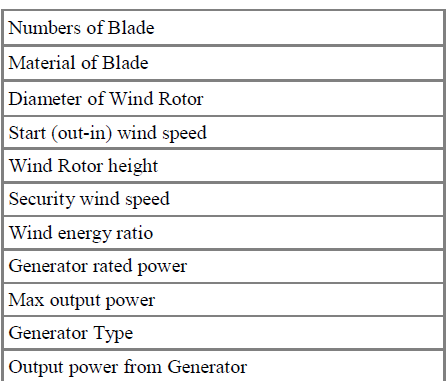 |
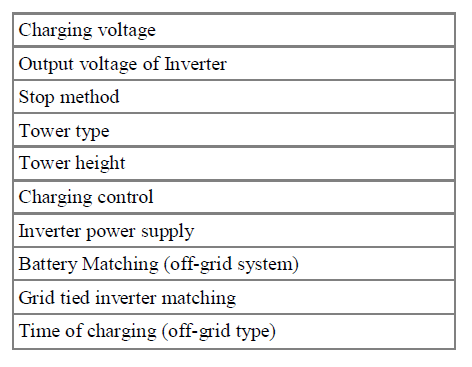 |
Wind terminology to be considered |
| • Start-up Speed - This is the speed at which the rotor and blade assembly begins to rotate. |
| • Cut-in Speed - Cut-in speed is the minimum wind speed at which the wind turbine will generate usable power. This wind speed is typically between 7 and 10 mph for most turbines. |
| • Rated Speed - The rated speed is the minimum wind speed at which the wind turbine will generate its designated rated power. For example, a "10 kilowatt" wind turbine may not generate 10 kilowatts until wind speeds reach 25 mph. Rated speed for most machines is in the range of 25 to 35 mph. At wind speeds between cut-in and rated, the power output from a wind turbine increases as the wind increases. The output of most machines levels off above the rated speed. Most manufacturers provide graphs, called "power curves," showing how their wind turbine output varies with wind speed. |
| • Cut-out Speed - At very high wind speeds, typically between 45 and 80 mph, most wind turbines cease power generation and shut down. The wind speed at which shut down occurs is called the cut-out speed, or sometimes the furling speed. Having a cut-out speed is a safety feature which protects the wind turbine from damage. Shut down may occur in one of several ways. In some machines an automatic brake is activated by a wind speed sensor. Some machines twist or "pitch" the blades to spill the wind. Still others use "spoilers," drag flaps mounted on the blades or the hub which are automatically activated by high rotor rpm's, or mechanically activated by a spring loaded device which turns the machine sideways to the wind stream. Normal wind turbine operation usually resumes when the wind drops back to a safe level. |
PARTS OF VERTICAL AXIS WIND MILL GENERATOR |
| BLADES: |
Factors affecting the performance of windmill blades: |
• Shape of Blade |
| This is important because if an optimum blade shape is discovered, then the overall productivity of a windmill can be increased. The shape of windmill blades highly influences their rotation. Few different shapes of windmill blades available are: the flat, rectangular ones, the wing shaped ones and the ones with edges tapered to a thin line or edges rounded similar to the ones of an airplane wing. In the case of the horizontal axis windmills, the wing shape has proved to be the most efficient one. The vertical axis windmills works very well with all the shapes of the windmill’s blades, however the best performance this blade is in its first stages and not yet is given by the flat ones as well as the ones with both edges rounded. |
• Material for Windmill Blades: |
| Decades ago wood was used to make the windmill blades. Nowadays wood is still used but the design is however different and a lighter wood material is used, to carve the blade and faster speed rotation. The latest blade design is made of fiber-glass and epoxy resin. Although marketed, what makes it unique is its curvature like tip which allows it to catch low wind speeds. |
| However some turbine blades have even been made with the raw material made for PVC piping which have been found to break in strong lengthy winds, but are inexpensive to replace. The turbine blades made of carbon fiber are light weight, and has a razor sharp edge which allows it to literally cut through the wind and makes it almost silent. This material is preferred and is used in most wind turbine machines sold today. |
• Length of windmill blades |
| The length is also an important factor. If a blade is longer, it covers a larger surface while it rotates, hence they can catch more wind with every rotation. This may show the way to more torque. These blades are growing longer from the 30 to 40 meters up to 60 meters. |
• Number of Blades: |
| The most important thing to take into consideration when talking about windmill blades is their number. The old ones normally had 4 very heavy blades. Majority of them were use in grain grinding. After that three blades became the most popular. More blades seemed to raise noise and slow down the rotation of the turbine’s propeller formation. After more research was done the perception of using more than three blades was no longer a factor. Currently, the most recent windmills are equipped with two or three blades. |
• Surface Treatment |
| This is important since if an optimum surface treatment can be determined, the blades would not only be protected from the elements but also be more productive. |
• Tip Speed Ratio |
| The tip speed ratio is very important. The ratio of the speed of the wind and the speed of the blade tips is called Tip Speed Ratio. High efficiency 3-blade-turbines have tip speed of 6 to 7. The tip speed ratio is directly proportional to the windmill’s productivity. |
| If the efficiency of a wind turbine is improved, then more power can be generated thus decreasing the need for costly power generators that cause pollution. This would also lessen the cost of power for the common people. The wind is factually there for the taking and doesn’t cost any money. Power can be produced and stored by a wind turbine with little or no pollution. If the efficiency of the common wind turbine is enhanced, the common people can cut back on their power costs enormously. Wind energy contributes very little pollution, toxic by-products or greenhouse gasses; it is still a sufficient supplement for non-renewable fuels. |
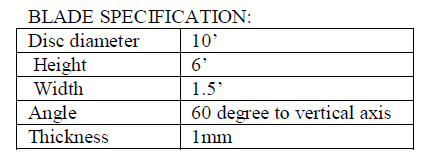 |
PULLEY: |
| A pulley is a wheel on an axle that is designed to support movement of a cable or belt along its circumference. Pulleys are used in a variety of ways to lift loads, apply forces, and to transmit power. |
| Hero of Alexandria identified the pulley as one of six simple machines used to lift weights. Pulleys are assembled to form a block and tackle in order to provide mechanical advantage to apply large forces. Pulleys are also assembled as part of belt and chain drives in order to transmit power from one rotating shaft to another. |
Direct drive pulley: |
| A "Direct Drive" pump has a hollow shaft, which simply slides onto the drive shaft of a motor or engine. The flange on the pump is mounted to the face of the engine or shaft end of the motor. Normal gasoline engine speed is about 3450 RPM. Since the pump is connected directly to the engine shaft, the pump RPM is the same as the engine RPM. Electric motors typically will turn a direct drive pump at 45 RPM or 75 RPM. Direct drive pumps allow for a more compact designed pressure washer. Another advantage is that this drive system is simple, with fewer moving parts; therefore less expensive. The disadvantage is by having the pump spin as much as the engine or motor, the bearings and other parts get more wear and tear, reducing the life span of the pump. Direct drive pressure washers transfer the vibration of the engine or motor directly to the pump. Also, the faster pumps of direct drive pressure washers are spinning so fast that they cannot draw water from a tank very well. However, they tend to work just fine when the water is forced into the pump, like when it is hooked-up to a hose. |
| Benefits of Direct Drive: |
| Compact Design |
| Lower Acquisition Cost |
| Disadvantages of Direct Drive: |
| Reduced Life Span |
| Cannot Draw Water from Tank or Standing Water Source |
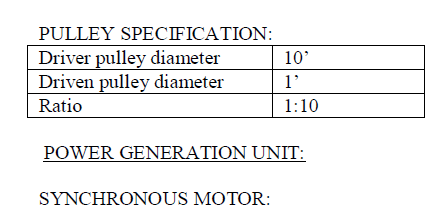 |
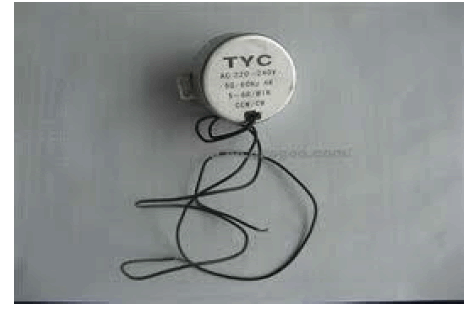 |
| A synchronous electric motor is an AC motor in which the rotation rate of the shaft is synchronized with the frequency of the AC supply current; the rotation period is exactly equal to an integral number of AC cycles. Synchronous motors contain electromagnets on the stator of the motor that create a magnetic field which rotates in time with the oscillations of the line current. The rotor turns in step with this field, at the same rate. |
OPERATION |
| The operation of a synchronous motor is simple to imagine. The 'Stator' winding, when excited by a polyphase (usually 3-phase) supply, creates a rotating magnetic field inside the motor. The rotor winding, which acts as a permanent magnet, simply locks in with the rotating magnetic field and rotates along with it. During operation, as the rotor locks in with the rotating magnetic field, the motor is said to be in synchronization. |
| Once the motor is in operation, the speed of the motor is dependent only on the supply frequency. When the motor load is increased beyond the breakdown load, the motor falls out of synchronization i.e., the applied load is large enough to pull out the field winding from following the rotating magnetic field. The motor immediately stalls after it falls out of synchronization. |
LEAD ACID BATTERY: |
| An electrical battery is one or more electrochemical cells that convert stored chemical energy into electrical energy. |
| Discharge: During the discharge portion of the reaction, lead dioxide (positive plate ) and lead (negative plate ) react with sulfuric acid to create lead sulfate , water and energy. |
| Charge: During the recharge phase of the reaction, the cycle is reversed the lead sulfate and water are electrochemically converted to lead, lead oxide and sulfuric acid by an external electrical charging source. |
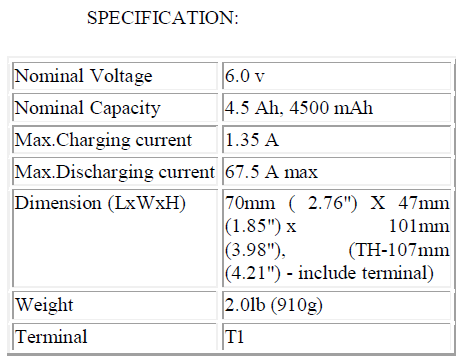 |
INVERTER: |
| A power inverter, or inverter, is an electrical device that changes direct current (DC) to alternating current (AC); the converted AC can be at any required voltage and frequency with the use of appropriate transformers, switching, and control circuits. |
| Solid-state inverters have no moving parts and are used in a wide range of applications, from small switching power supplies in computers, to large electric utility high-voltage direct current applications that transport bulk power. Inverters are commonly used to supply AC power from DC sources such as solar panels or batteries. |
| The inverter performs the opposite function of a rectifier. |
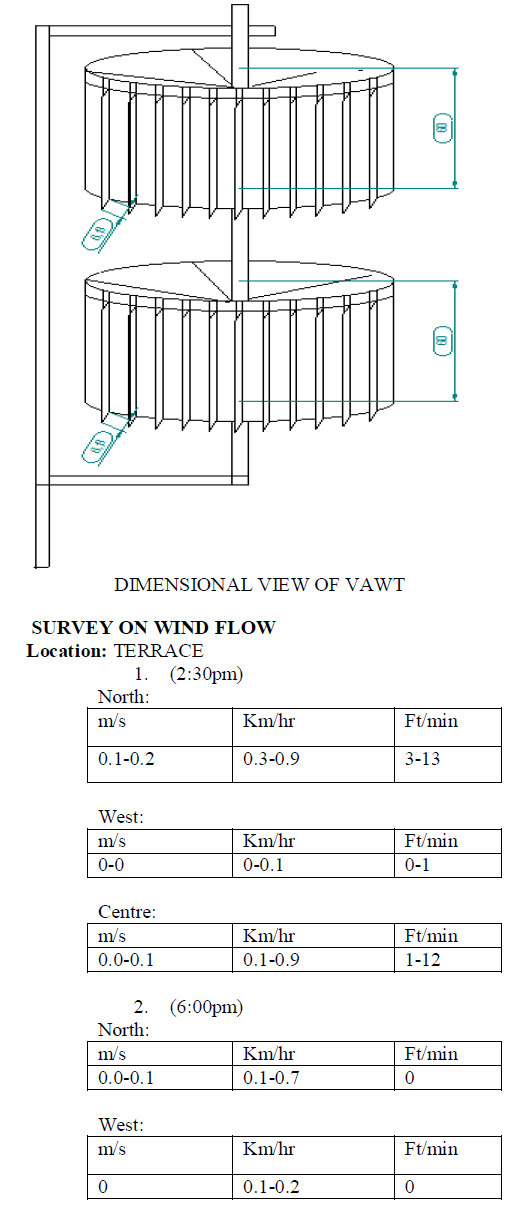 |
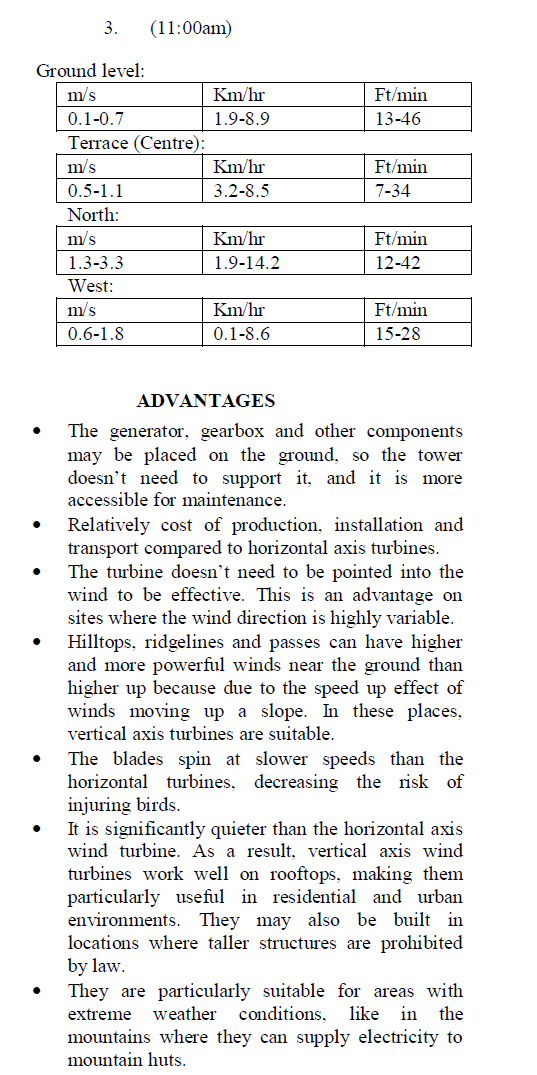 |
CONCLUSION |
| In the recent era of rapidly developing technology the design of this vertical axis wind mill generator can be able to full fill certain amount of energy requirements. These generators can also replace the costly and less efficient solar panels. |
ACKNOWLEDGMENT |
| The authors are grateful to Dr. S. S. Hebbal, the principle of P D A C E, Gulbarga for his keen interest and encouragement. The authors are thankful to Dr. Mahadevappa Gadge (co-ordinator TEQIP-ll), training and placement officer, PDACE Gulbarga for providing necessary facility and moral support. |
References |
|